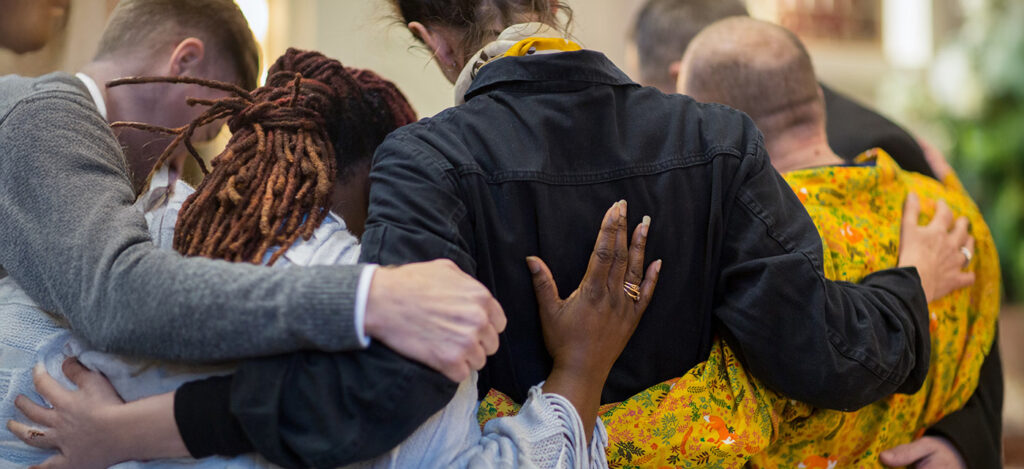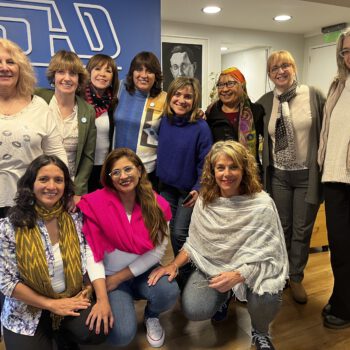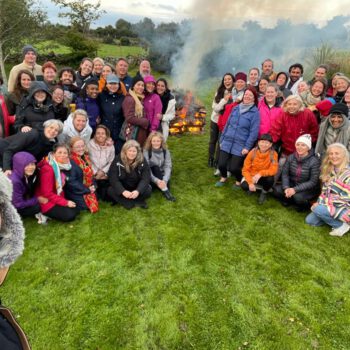“The cure for the pain is in the pain.” – Rumi
Embracing Death
In the warmth of the hollow of my interlaced hands lies the tiny body of our second child, three months into gestation. I saw him… he was a boy. His arrival was as unexpected as his departure. After learning that his heart was no longer beating, and that his sister was caressing a swollen but already empty belly, birthing him was a mixture of relief, pain, love, and gratitude.
The pain of pregnancy loss involves not only holding yourself but also accompanying your partner, your daughter, your family. Women cannot give birth alone. We need the unconditional support and love of our partners, friends, doulas, families, and anyone who is part of our support network.
Grief has no real space within the rules of today’s system. It doesn’t sell. It doesn’t make profits. Or likes. First of all, it requires time—something we must allow ourselves to have and nurture in a culture of urgency. Secondly, it requires spaces of understanding and listening, safe, trustworthy, and solid relationships—which today are also revolutionary.
Grief challenges the norms of productivity because it pulls us out of our automatic mode of hyperactivation and connects us with non-doing, stillness, silence, and contemplation. Each grief also, unconsciously, touches the wounds of our family history and the survival mechanisms forged in similar past experiences.
When I was a child, I don’t recall having space to talk about death the way I would’ve needed. After my grandfather died, I went to English class between his passing at the clinic and his farewell at the funeral home. I didn’t tell anyone that just an hour before, I had watched my grandfather die in front of me. I carried on as if nothing had happened, on autopilot.
When my grandmother passed away four years ago, we accompanied our daughter in processing her first significant loss in the way that she needed and that came naturally to her. She was able to ask questions, draw, cry, create her own altar with photos and candles, give space to fear and the recognition of death as a part of life. It was a process that gave us great strength as a family.
I take it back; the truth is, women can give birth alone—both to the living and the dead. We do it every day. But we shouldn’t have to. In a healthy society, it simply wouldn’t happen. We are normalizing a deep disconnection, a result of the normalization of countless individual and collective traumas. Grief is an individual, familial, and social process that urgently needs us to open the doors of our hearts—in every home and every institution.

Opening to Pain is Opening to Love
What are the consequences of disconnecting from pain? How were we supported in childhood when our grandparents died, or when our parents divorced? What happened in the family if we migrated to another country, experienced historical trauma, or received a medical diagnosis? What roles did health or educational institutions play in that process? What rituals do we have as a community to make grief visible and hold space for it?
If there was no room to name it and process it in community, what adaptive survival mechanisms were developed?
“I suspect that, in a certain sense, the avoidance of trauma caused by grief is one of the greatest threats facing humanity today. It is responsible for the immense suffering caused by addictions, abuse, and also social disconnection and perhaps even war,” writes Joanne Cacciatore in her beautiful book Bearing the Unbearable.
When I accompany others through grief, we come again and again to the difficulty of opening to pain and trusting the process. Some people believe something is wrong with them because their environment pushes them to “get over it,” to move on with their life because “it’s time.” Others arrive with physical symptoms that have no medical explanation but began sometime after the death of a loved one.
Some clients have developed all kinds of strategies—conscious and unconscious—to avoid being alone or in silence with themselves, just to be able to keep being “strong.” Many people carry in their bodies frozen and excluded griefs from decades and generations ago.
The earlier or more intense our loss, and the fewer safe attachments we had to process it, the stronger our adaptive survival responses—and the more harmful their effects over our lifetime. So, how can we accompany and support ourselves in the process? If, as Gabor Maté says, pain is a natural response to the loss of love—do we have a safe space to feel?The Compassionate Inquiry approach offers us a kind of magic potion for this remedy that we can co-create: compassion. Being able to accompany ourselves with compassion in the grieving process is deeply healing. Providing a space free of agendas and demands; allowing every experience exactly as it unfolds. Accompanying ourselves from a place of presence so that we can also hold the questions, doubts, rage, fear, guilt, and all that comes with it—without judgment; taking all the time we need so that, as the great Elizabeth Kübler-Ross said, death can become one of the most magnificent experiences of life.



